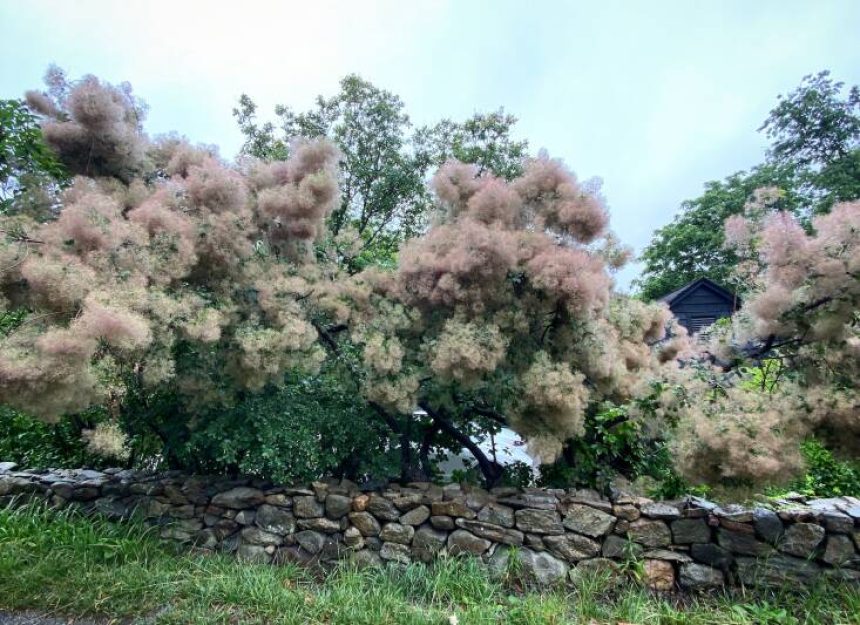I also try to design gardens that don’t require long-term irrigation. Making smart plant choices—right plant, right place—for your site helps with that. All plants need establishing irrigation for a couple of years, but my goal is to try to get them off after that. Sure, I’ll continue to spot water if needed in a drought or for more mature plantings, but I’m not a fan of heavy drinkers, unless they are near or in water where they will be happiest.
6. Show shrubs some love.
There is much talk about native herbaceous perennials and their benefits for pollinators and critters, but I think shrubs could use a little more love. They are the workhorses and unsung heroes in a garden. There’s a shrub for every situation including small gardens and container gardens. They provide structure, four-season interest, habitat, shelter, and food for wildlife and us!
I love an edible shrub: Amelanchier, Aronia, blueberry, to name a few native ones. And I love a cascading shrub, like a native ninebark (Physocarpus). Lately, I’ve been using our northern native bayberry (Myrica pensylvanica). It’s semi-evergreen, provides great shelter and food for birds, flaunts gorgeous leaves and berries, and offers a wonderful robust undulating form. And it is both drought- and wet-tolerant. I’ve yet to meet a Viburnum I don’t love. And then there are all the native azaleas, Cornus, Calycanthus, Hamamelis. Oh, the list goes on and on . . .
7. Work with what you have.

When designing a new project, I look at the site to see what we can use that’s already there. I help guide construction to save and reuse as much material, such as soil, plants, stone, as possible. The old thinking of hauling everything away is just not viable anymore. I always ask: What disturbance might my design cause? How can we design to be lighter on the land? What is the plan for natural debris the design will produce? Then, I plan accordingly. Working with the existing soil is the goal. I don’t amend soils if I can help it, and instead, I choose the right plants for the soil conditions. I also try not to buy soil. A truck load of screened topsoil can still contain invasive weed seeds. Why bring that to a property? Let’s work with what we have.
We often fail to consider the consequences of our wants and our actions as gardeners, landscape professionals, and homeowners. Perhaps the landscape field gets a bit of a pass because we’re working with “nature”? But there’s plenty of waste and environmental consequences in the industry. We need to be much more vigilant with what we’re buying, where we’re buying it from, how and what we are planting, and how we are caring for our land.
Let’s question our old practices and consider how all of it will affect our planet and ecosystems. I’ve definitely evolved over the years as a designer. I’m more interested in working with what’s there on a property than forcing my vision onto a place. I ask more questions, observe more carefully, and spend more time considering the outcomes then just striving for beauty. I’m excited and hopeful that gardeners are heading in a better direction, but we need to keep questioning, learning, and working collectively—sharing information and being open to change. Nature isn’t static and gardens—and gardeners—certainly shouldn’t be either.
See also:
(Visited 1 times, 1 visits today)







